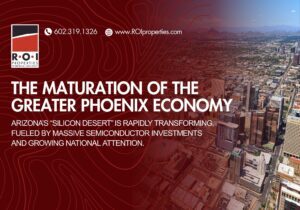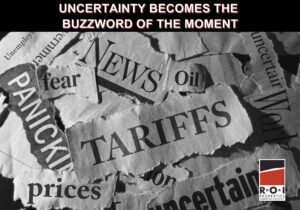The commercial real estate market has recovered nicely from the lows of a few years ago, but that has increased the importance of due diligence for today’s buyers and investors. To understand why, we need to look back at what was happening in the market in 2010-2014. Many of the investors were buying properties with a speculative or value-add strategy and a low basis. Because most of the deals were made with banks, receivers, or directly from owners on a short-sale basis, there were no representations or warranties.
Fast forwarding to 2016, that means today’s purchasers are best to assume the previous buyer didn’t conduct the appropriate amount of due diligence. It can help to think of it from a residential property perspective, where fix-and-flips were everywhere: new carpets, shiny appliances and a paint job, but no improvements made to the plumbing, wiring, roof, etc. The same superficial treatments were done in commercial properties as well, and within a few years, the new buyers have a list of expensive repairs to perform.
Earlier in the decade, low prices allowed buyers to book the risk into the transaction. With relatively higher prices, there’s no room for error if hidden problems arise. As such, the due diligence of a property must include the physical structure and its condition, as well as traffic and the availability of vehicular access and parking, utilities, environmental concerns, and Americans with Disabilities Act compliance/accessibility, among many others.
Don’t Be Fooled by Pro Formas
Due diligence comes into play on the financial feasibility side, as well. At this stage in the market, some properties may be in their third or fourth trade. As a result, we’re seeing brokers and sellers using pro forma financials rather than actual financials. Tighter margins make it tougher to demonstrate value, so property owners pitch best-case scenarios to justify increasingly higher prices.
In a pro forma, all bets are off. Rather than giving an accurate view of what’s happening at a property, a seller can assume a 95 percent leased-up building at true market value rent. Until you’ve requested and received an accurate set of financials, don’t get caught up in the excitement of the deal. A sophisticated property owner will be more than happy to share a set of their financial books, including a rent roll and a profit and loss (P&L) statement. With the actual numbers in hand, it’s time to do your due diligence on the true operating performance (rather than assumed expenses or revenues). Ask for the leases that support the revenues and the rent roll, and request backup documentation on the expense side. Don’t assume anything.
The Commercial Real Estate Contrarian
It’s easy to assume that a hot asset class is going to continue its streak—but you should never let greed or headlines dictate your investment decisions. Do you really understand why a given market is performing so well? What have the historical ups and downs been? Is it likely that demand will persist for the products or services that the intended purchase will offer? Do the actual revenues justify the acquisition? What happens in a worst-case scenario?
Multifamily has been the best performing asset class for the past few years. The commercial real estate contrarian would probably conclude that means it’s time to look at opportunities in office, industrial, and some retail segments, where there might be untapped value. Above all, you need to remain objective when considering the plusses and minuses of asset classes and individual properties—and be wary of taking property owners at their word, particularly when they dangle a pro forma in front of you. When it comes to doing due diligence, potential investors should first invest the time in cultivating a relationship with a commercial real estate broker or legal and financial advisor with specialized knowledge.










